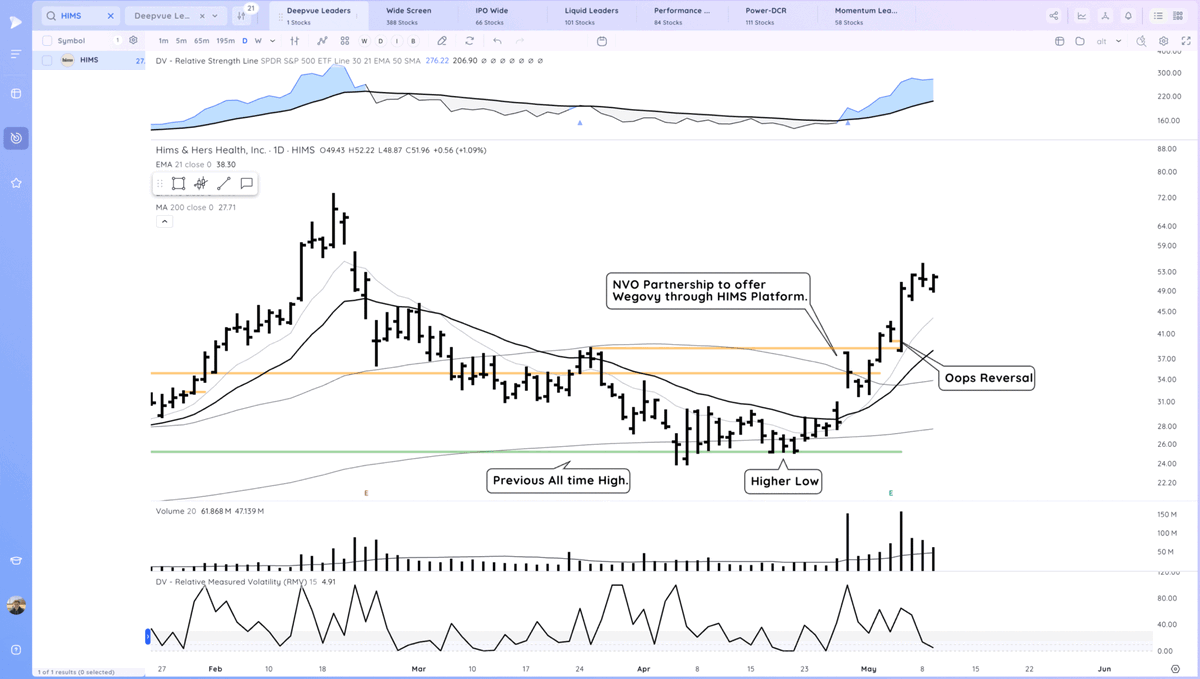What do top traders do that others don’t?
The Trader’s Handbook breaks it down.
Here are 10 lessons that help you build consistency and real results.
The Trader’s Handbook breaks it down.
Here are 10 lessons that help you build consistency and real results.

Lesson 1: Every trader follows the same 4-stage path:
Stage 1: Unprofitable and random
Stage 2: Boom and bust
Stage 3: Controlled consistency
Stage 4: Outperformance
Figure out your stage by studying your equity curve. It never lies.
Stage 1: Unprofitable and random
Stage 2: Boom and bust
Stage 3: Controlled consistency
Stage 4: Outperformance
Figure out your stage by studying your equity curve. It never lies.
Lesson 2: Complexity kills consistency
The best systems are brutally simple.
A few rules. A few setups. A few stocks.
Overbuild your process and you’ll freeze when it matters most.
The best systems are brutally simple.
A few rules. A few setups. A few stocks.
Overbuild your process and you’ll freeze when it matters most.

Lesson 3: Risk management is your real edge
You will take losses.
Your only job is to make sure they’re small.
Position size, tight stops, and clear exits matter more than finding perfect entries.
You will take losses.
Your only job is to make sure they’re small.
Position size, tight stops, and clear exits matter more than finding perfect entries.
Lesson 4: Your equity curve is your compass
Random = no system
Mirrors the market = reactive
Higher lows = edge
Track it monthly. It shows exactly where you are—and what needs work.
Random = no system
Mirrors the market = reactive
Higher lows = edge
Track it monthly. It shows exactly where you are—and what needs work.

Lesson 5: Most traders hold too long
Great stocks break down before the story does. They even break down while fundamentals still look good. Learn to sell when the chart changes character.
The chart speaks before the narrative makes sense.
Great stocks break down before the story does. They even break down while fundamentals still look good. Learn to sell when the chart changes character.
The chart speaks before the narrative makes sense.
Lesson 6: Tight entries are everything
You need setups that offer clarity, not hope.
The tighter the setup, the smaller the risk.
Tight risk means you can size up with conviction.
You need setups that offer clarity, not hope.
The tighter the setup, the smaller the risk.
Tight risk means you can size up with conviction.
Lesson 7: Success in trading is cyclical
The market cycles. So do you.
Push hard when your system aligns with the trend.
Step back when conditions break down. Adapt exposure, not your process.
The market cycles. So do you.
Push hard when your system aligns with the trend.
Step back when conditions break down. Adapt exposure, not your process.
Lesson 8: Volume reveals intent
Price moves. Volume confirms. Look for volume spikes at breakouts and dry-ups in bases.
Institutions show their hand if you know where to look.
Price moves. Volume confirms. Look for volume spikes at breakouts and dry-ups in bases.
Institutions show their hand if you know where to look.
Lesson 9: Build a model book of winners
Top traders study past leaders in detail.
They collect charts, spot patterns, and learn what real strength looks like.
This becomes their reference for future trades, and a source of conviction.
Top traders study past leaders in detail.
They collect charts, spot patterns, and learn what real strength looks like.
This becomes their reference for future trades, and a source of conviction.

Lesson 10: Discipline beats tactics
Most traders fail not from bad picks, but from breaking their own rules.
Your mindset and execution habits are the real foundation.
Most traders fail not from bad picks, but from breaking their own rules.
Your mindset and execution habits are the real foundation.
Recap:
1. Know your stage
2. Simplify your system
3. Manage risk tightly
4. Use your equity curve
5. Sell when character changes
6. Enter tight
7. Adjust with cycles
8. Watch volume
9. Build a model book
10. Master your discipline
Study them. Apply them. Refine as you go.
1. Know your stage
2. Simplify your system
3. Manage risk tightly
4. Use your equity curve
5. Sell when character changes
6. Enter tight
7. Adjust with cycles
8. Watch volume
9. Build a model book
10. Master your discipline
Study them. Apply them. Refine as you go.
The Trader’s Handbook drops in 2 weeks... but you can pre-order now.
And when you pre-order, you get access to exclusive bonuses: model books, live sessions, playbooks, and more.
Grab your copy now 👉🏼 amzn.to/3GVNRdG
And when you pre-order, you get access to exclusive bonuses: model books, live sessions, playbooks, and more.
Grab your copy now 👉🏼 amzn.to/3GVNRdG

• • •
Missing some Tweet in this thread? You can try to
force a refresh












